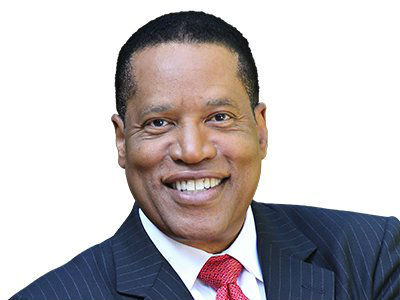How Amazon sellers can prep for a profitable (and chaos-free) Black Friday
Lifestyle

Audio By Carbonatix
9:00 AM on Wednesday, November 5
By Bryan Fowler for Intero Digital, Stacker
How Amazon sellers can prep for a profitable (and chaos-free) Black Friday
Black Friday is the retail event of the year. But on Amazon, it goes even further: It’s an algorithm-driven battlefield. Consumers are laser-focused on deals, especially Prime-exclusive discounts, and competition for the Amazon Featured Offer (formerly Amazon Buy Box) can be cutthroat. The opportunity? Huge. The stakes? Also huge.
If you sell on Amazon, Black Friday can be a sales accelerator, but only if you’re prepared for what comes with it: fast-moving inventory, Prime deal planning, and returns that boomerang back long after you’ve mentally moved on to Q1.
Intero Digital, an Amazon marketing agency, breaks down what’s fueling Black Friday this year, what Amazon sellers need to watch out for, and how to keep your store running like a well-oiled machine.
What to Know Before Running Prime Deals This Black Friday
Amazon Prime members spent an estimated $24.1 billion during the four-day Prime Day event this year, and this behavior is expected to carry over into Black Friday and Cyber Monday.
The visibility boost from Prime-exclusive deals is real. But before you jump on the promo train, it’s critical to make sure your pricing, margin, and inventory can actually support the surge without sinking your profits or causing fulfillment chaos.
Here’s what Amazon sellers should carefully evaluate.
Do the math before you discount.
Amazon’s built-in promotional tools, such as Prime-exclusive discounts and coupons, can definitely boost visibility and conversions. But that doesn’t mean they’re always profitable.
- Run a breakeven analysis. Factor in fulfillment by Amazon (FBA) fees, referral fees, advertising costs, and potential return rates, which typically spike during the holidays.
- Use Amazon’s Manage Your Experiments tool (for A/B-testing content) to understand how price or discount changes affect your conversion rate before peak season.
- Consider offering value-add bundles if your margin is tight instead of straight discounts. Shoppers love a perceived deal, and that deal doesn’t have to erode your per-unit profit.
Use Lightning Deals with intention.
Lightning Deals can drive a massive traffic spike, but they come with nonrefundable fees and strict eligibility rules.
- Amazon gives priority to Amazon Standard Identification Numbers (ASINs) with strong sales history, 3.5 or higher star ratings, and healthy inventory. If your product doesn’t meet those benchmarks, your deal might not be approved, or even if it is approved, it might not perform.
- If you’re not eligible or can’t justify the fee, a seven-day deal or a regular Prime-exclusive coupon combined with sponsored product ads can still drive solid results.
- Consider running your promotion earlier in the week (leading up to Black Friday weekend) when ad competition and cost per click might be slightly lower.
Analyze your competitive landscape.
Before setting your price or promotion, understand what your competitors are doing and where you can stand out.
- Use tools like Helium 10’s Market Tracker or Jungle Scout’s Opportunity Finder to assess how saturated your category is and what promotions are already active.
- Check your Featured Offer eligibility and make sure your pricing aligns with other sellers in your space. Undercutting drastically might win traffic but lose margin, while pricing too high might cost you conversions.
- Pay attention to listing quality. Your product photos, A+ Content, and bullet points need to clearly convey value if you want to compete on something other than price.
Before you launch any promotion, test it on a smaller scale, even just for a few days. This gives you performance data to make smarter decisions for Black Friday. Remember: Visibility is great, but only if it converts profitably.
Keep Your Amazon Inventory Ahead of Black Friday Demand
You can’t sell what you don’t have, and on Amazon, running low or going out of stock can cost you sales, sink your Best Seller Rank (BSR), kill your ad efficiency, and even trigger restock restrictions from Amazon’s FBA algorithm.
Here’s how to stay ahead and in stock.
Monitor Amazon’s Inventory Performance Index (IPI) religiously.
Your IPI score directly impacts how much inventory you can send into Amazon’s warehouses. If your score drops below 400, Amazon may limit your FBA restock quantity.
- Track your IPI weekly in Seller Central > Inventory > Inventory Planning.
- Remove stranded inventory and dispose of unsellable units to improve your score.
- Make sure your sell-through rate and excess inventory percentage stay in Amazon’s target range to avoid triggering penalties.
- Use the Manage Excess Inventory tool to identify slow-moving ASINs and decide whether to liquidate or reprice them.
Use forecasting tools to avoid stockouts or overstocks.
Amazon’s Restock Inventory dashboard is a good starting point, but it only looks at Amazon-specific sales velocity. For more accurate demand planning, especially during high-volume events like Black Friday, consider these tips:
- Use tools like SoStocked, Forecastly, or Inventory Planner to combine past sales, current ad spend, seasonal trends, and lead times.
- Look at year-over-year data from Q4 2023 to estimate demand surges for your top-selling ASINs.
- Factor in upcoming promotions, Lightning Deals, or influencer campaigns that could spike demand beyond your normal sales velocity.
Plan for inbound shipping delays.
During Q4, FBA warehouse check-in times can double or triple. Sellers during peak seasons have reported delays from 10 to 24 days, so build buffer time into your plans.
- Send in the inventory a few weeks earlier than normal to avoid being caught in receiving limbo.
- Use Amazon’s Shipment Performance dashboard to monitor transit issues or slow check-ins.
- If using a 3PL, confirm the cutoff dates and transit time buffers, especially for nonpartnered carriers that might not be prioritized by Amazon.
Set up a Fulfilled by Merchant (FBM) backup plan.
Even if you’re mostly FBA, having an FBM listing on standby gives you more control if things go sideways with inventory or fulfillment.
- Identify two or three of your top-performing ASINs and create FBM variants for emergency use.
- Work with a 3PL or internal fulfillment process that can handle increased order volume if FBA delays or sellouts happen.
- Make sure your FBM listings are Prime-eligible via Seller Fulfilled Prime (SFP) if possible, or at least backed by fast shipping and high customer service standards.
If you anticipate high velocity, don’t wait until November to replenish. Some sellers stagger shipments over multiple weeks to avoid tying up capital or triggering storage overage fees, but that only works if your IPI is healthy and your forecast is tight.
How to Prepare for Post-Holiday Returns on Amazon
Holiday returns are the ghost of Black Friday future, and they’re already baked into Amazon’s policy. For 2025, Amazon’s extended return window means that most orders placed between Oct. 1 and Dec. 31 can be returned through Jan. 31, 2026.
This is great for customers, but it does pose extra risk for sellers. Here are some considerations as you prepare:
- Factor returns into your margins. Amazon doesn’t refund FBA fulfillment fees on most returns. Depending on your category, return rates after the holidays can reach up to 30% (apparel and electronics tend to see the highest rates).
- Use post-purchase follow-ups. Tools like Jungle Scout’s review automation can help sellers reduce returns by encouraging satisfied customers to leave a review and by giving unhappy customers a channel to reach you before they open a return case.
- Manage refunds proactively. Use Manage FBA Returns in Seller Central to monitor return reasons. If “not as described” spikes, revisit your images, bullet points, and A+ Content to address this misalignment.
- Restock where possible. If returned items meet Amazon’s criteria for resale, you can opt into FBA Grade and Resell, which will allow you to recover some value on low-wear returns instead of just writing them off.
Black Friday on Amazon is an incredible sales opportunity, but only for sellers who’ve done the prep work. Prime deals can give you a massive traffic bump, but if your listing is out of stock, poorly optimized, or can’t handle a return wave, you’ll end up trading profit for chaos.
So run the promos, plan the bundles, and be the deal shoppers can’t ignore. But also be the seller who sleeps easy at night knowing your listings, inventory, and margins are locked in and ready for whatever Black Friday throws your way.
This story was produced by Intero Digital and reviewed and distributed by Stacker.

























